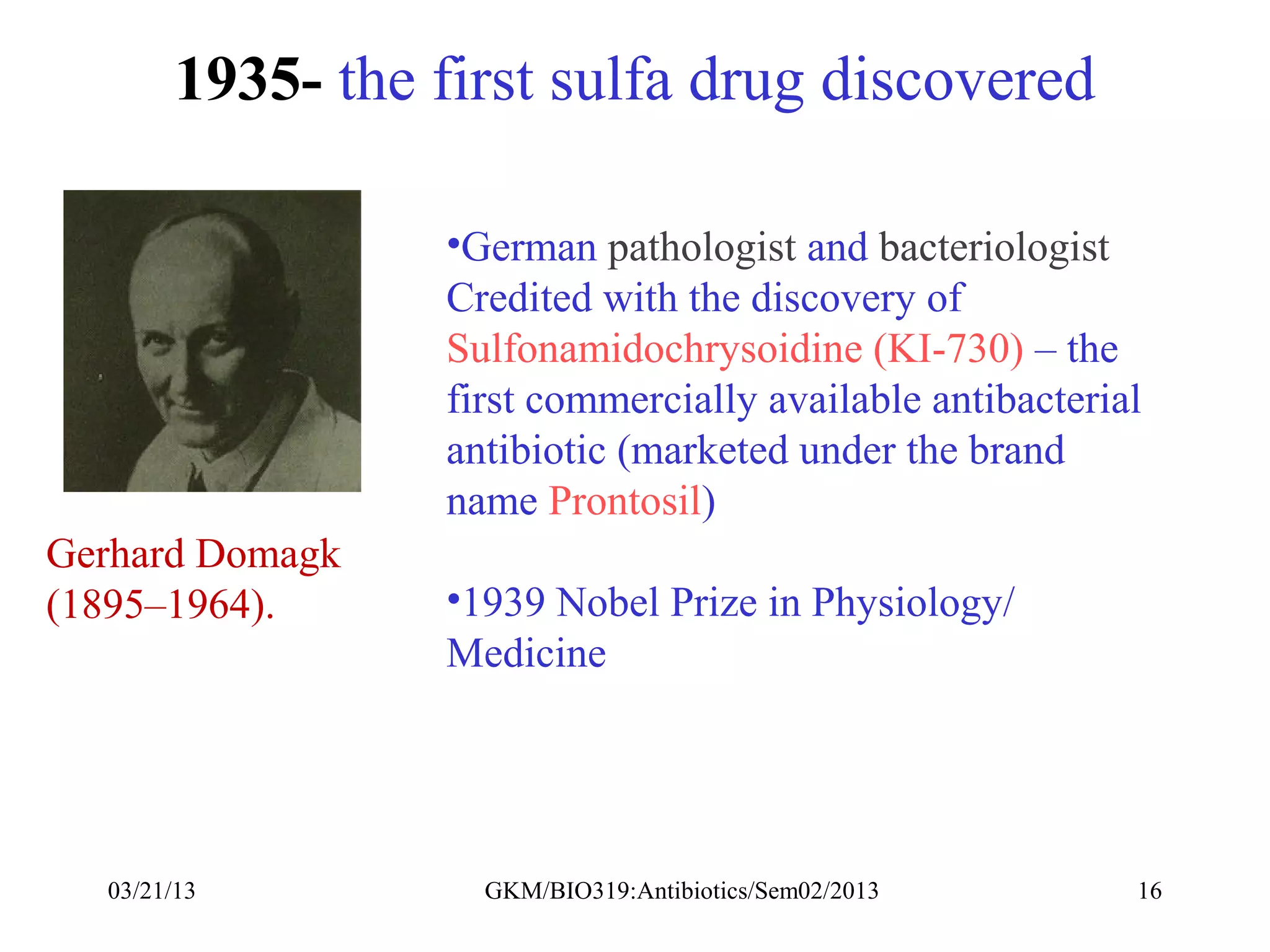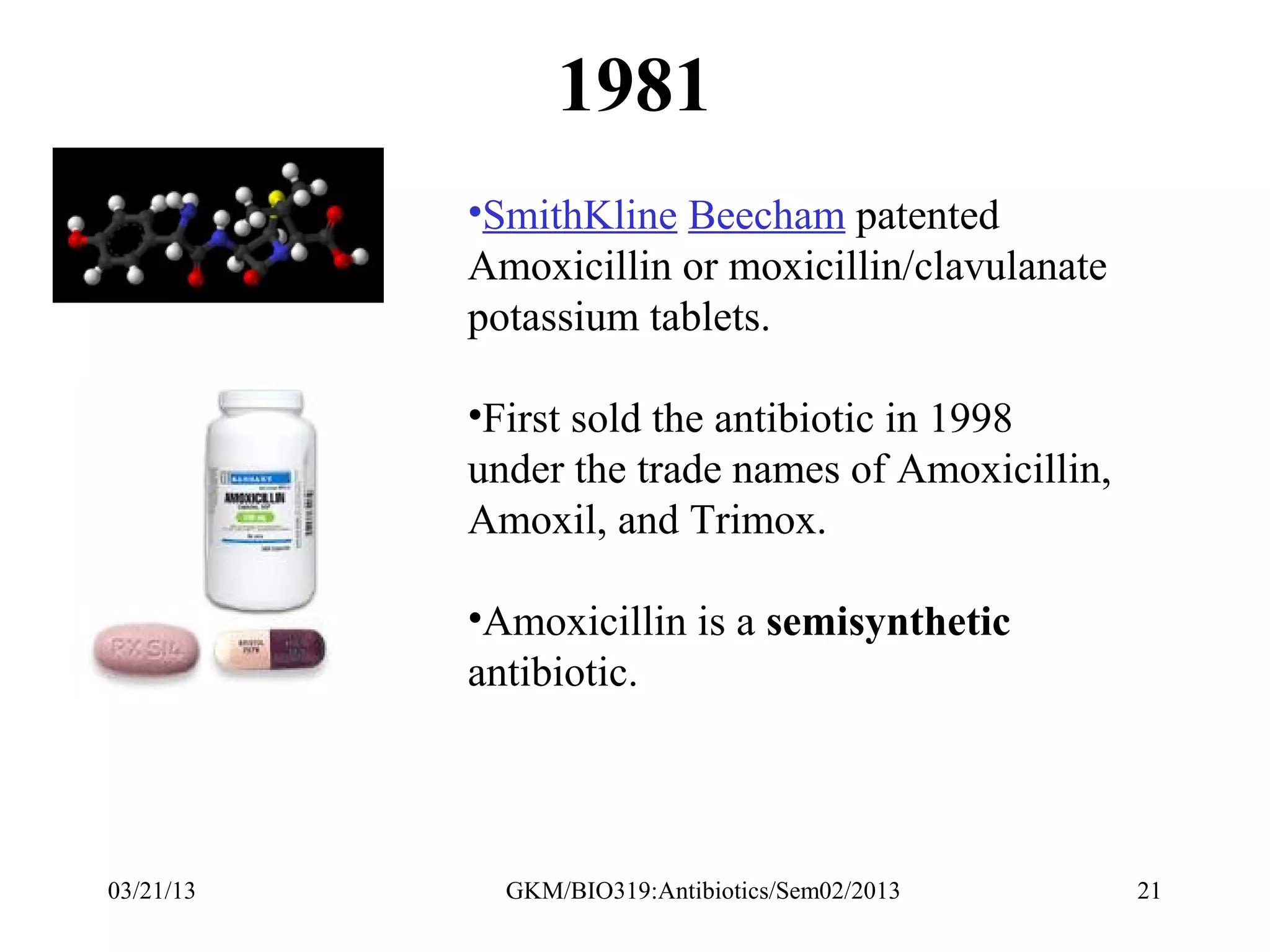This document outlines the course Bio 319: Antibiotics, including the course topics, lecture schedule, assessment breakdown, and course instructor Dr. G. Kattam Maiyoh. The course covers the history of antibiotic discovery from ancient times to modern developments. It will address bacterial classification, antibiotic mechanisms of action and resistance, and applications in human health, agriculture, and livestock production. Lectures and labs will explore antibiotic production, testing, and selection as well as emerging issues like bioterrorism.




















